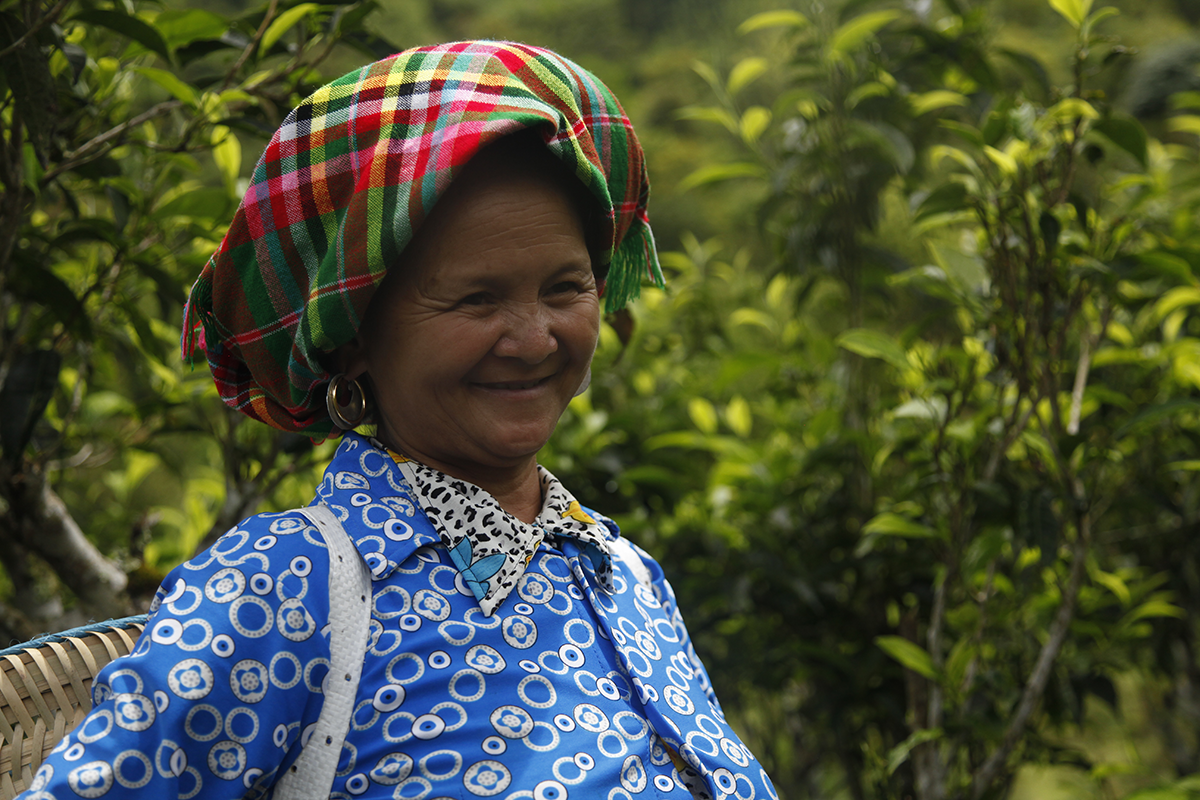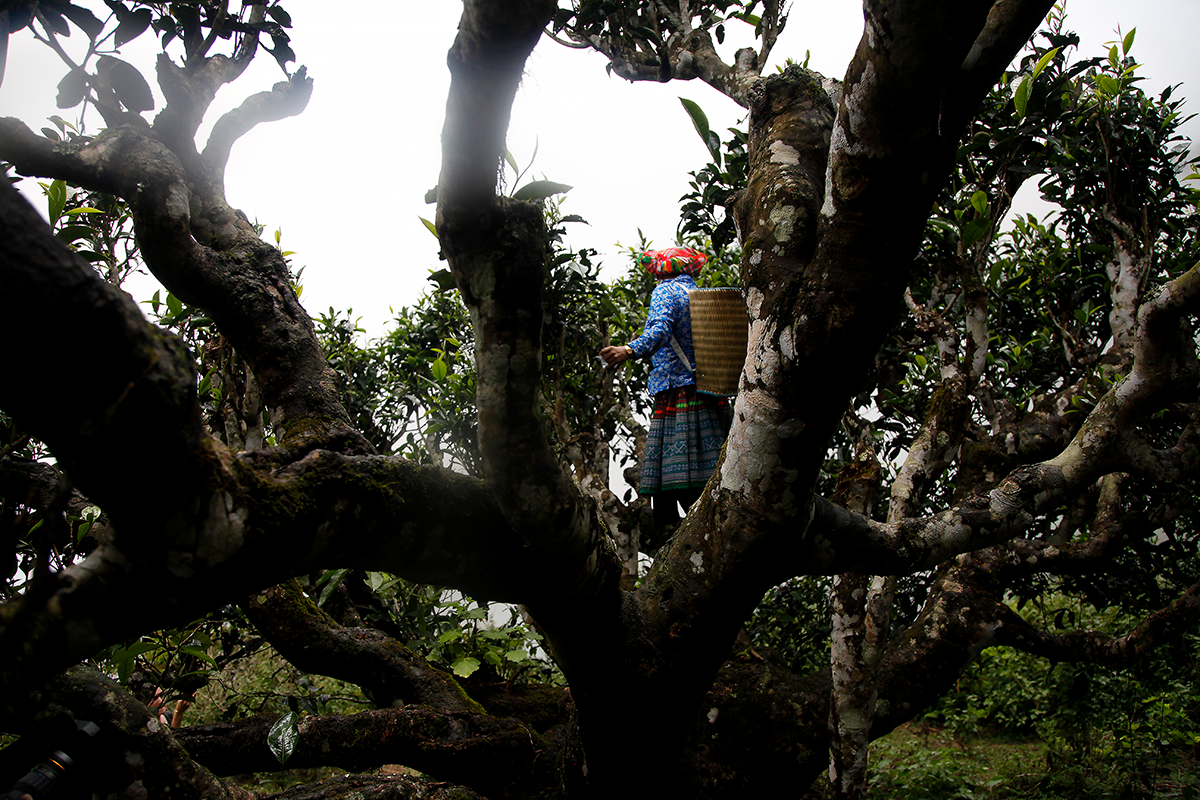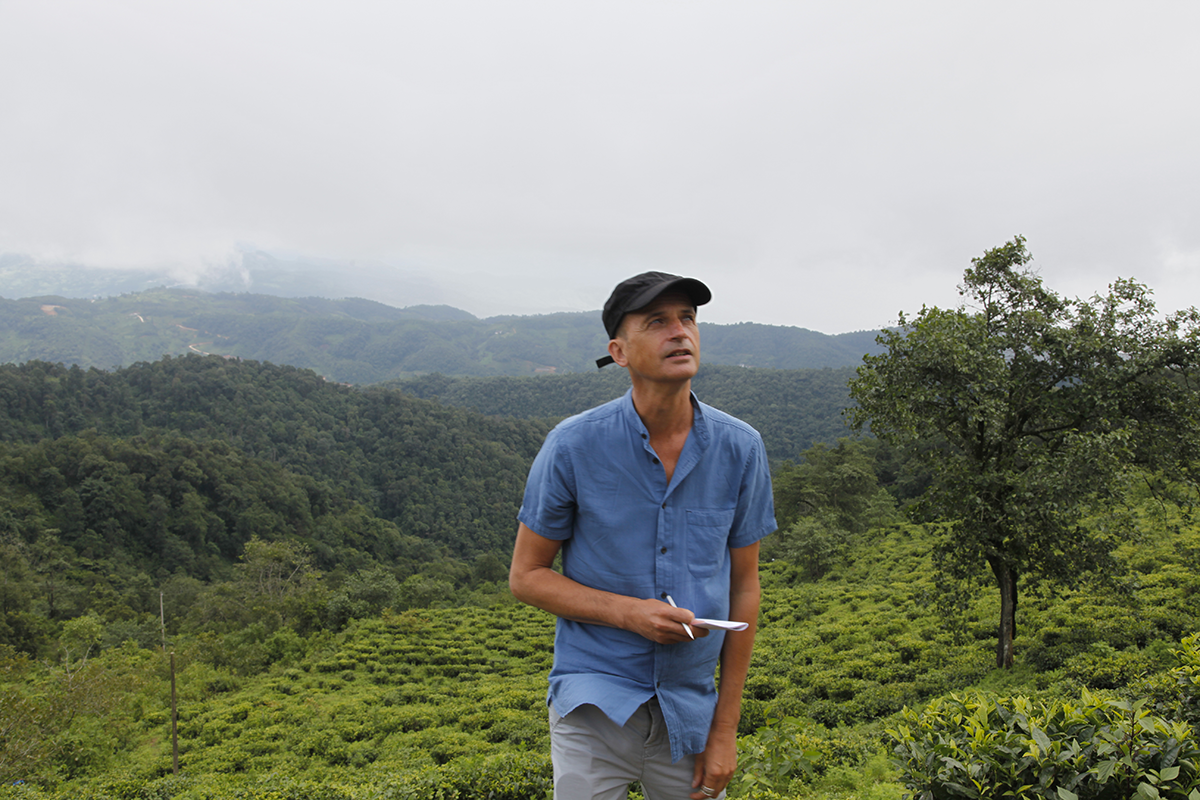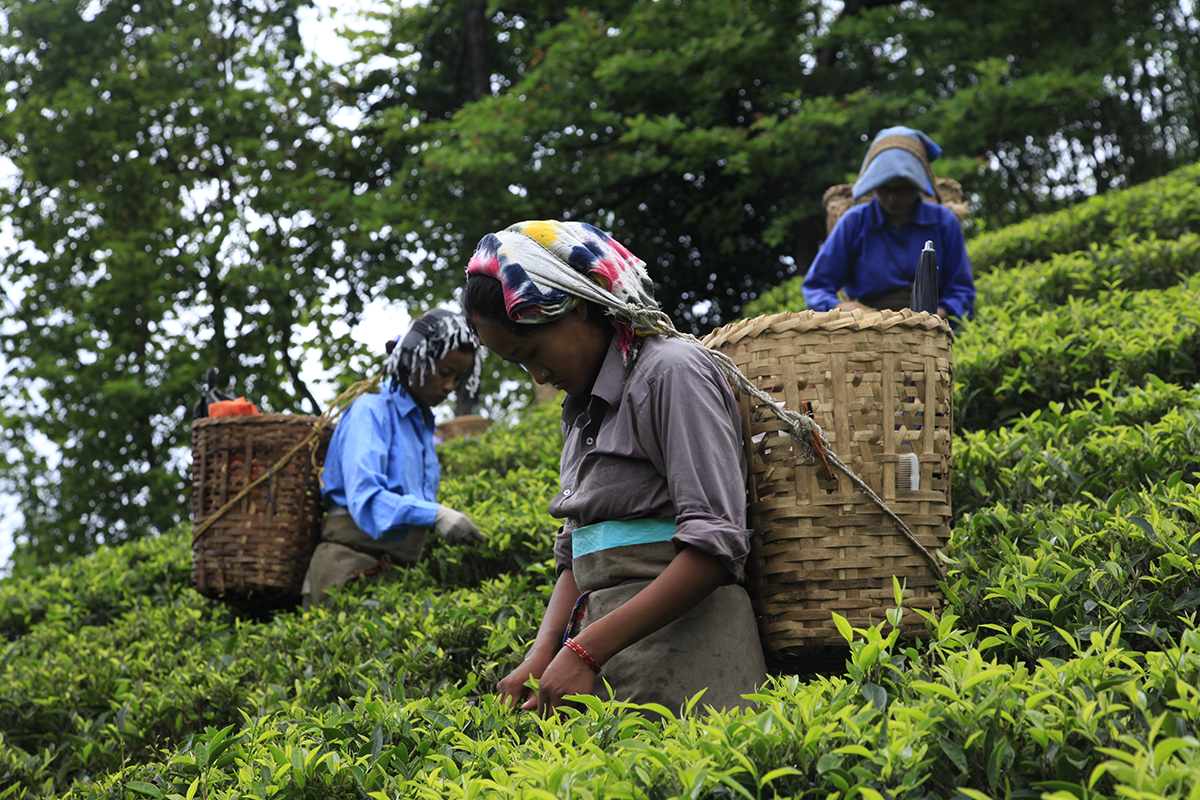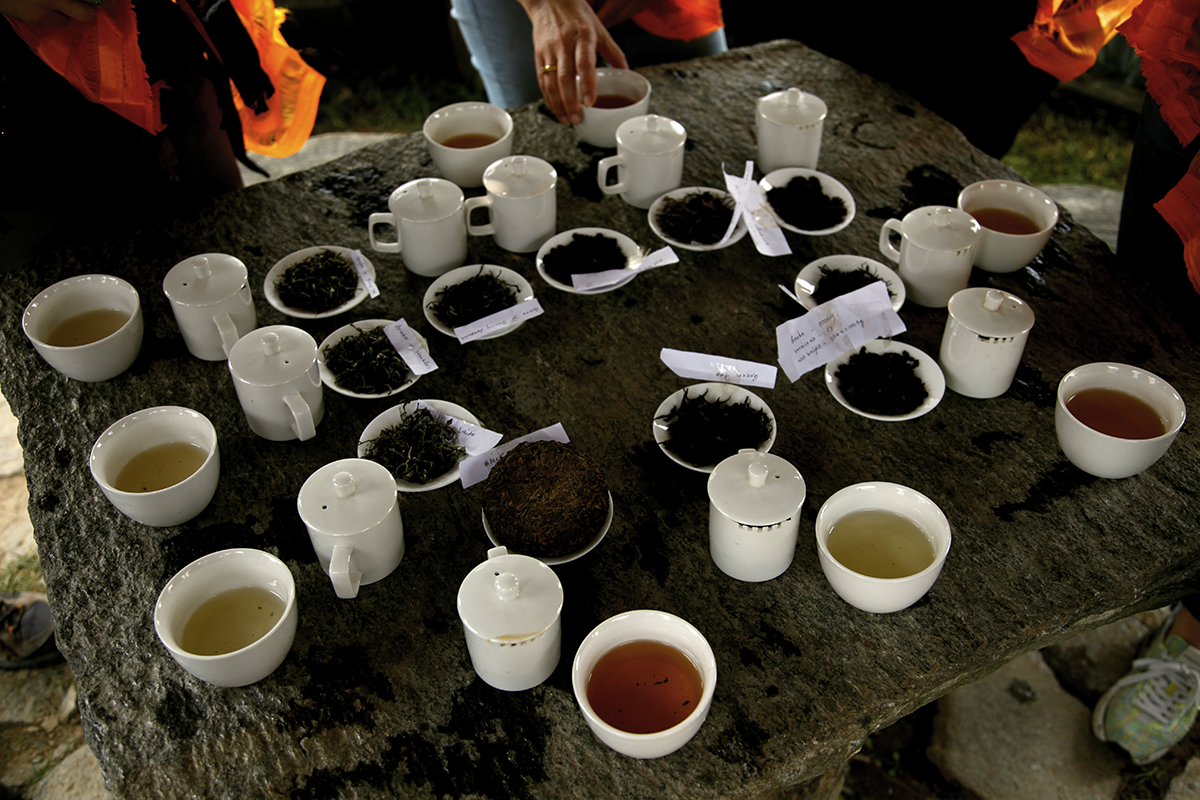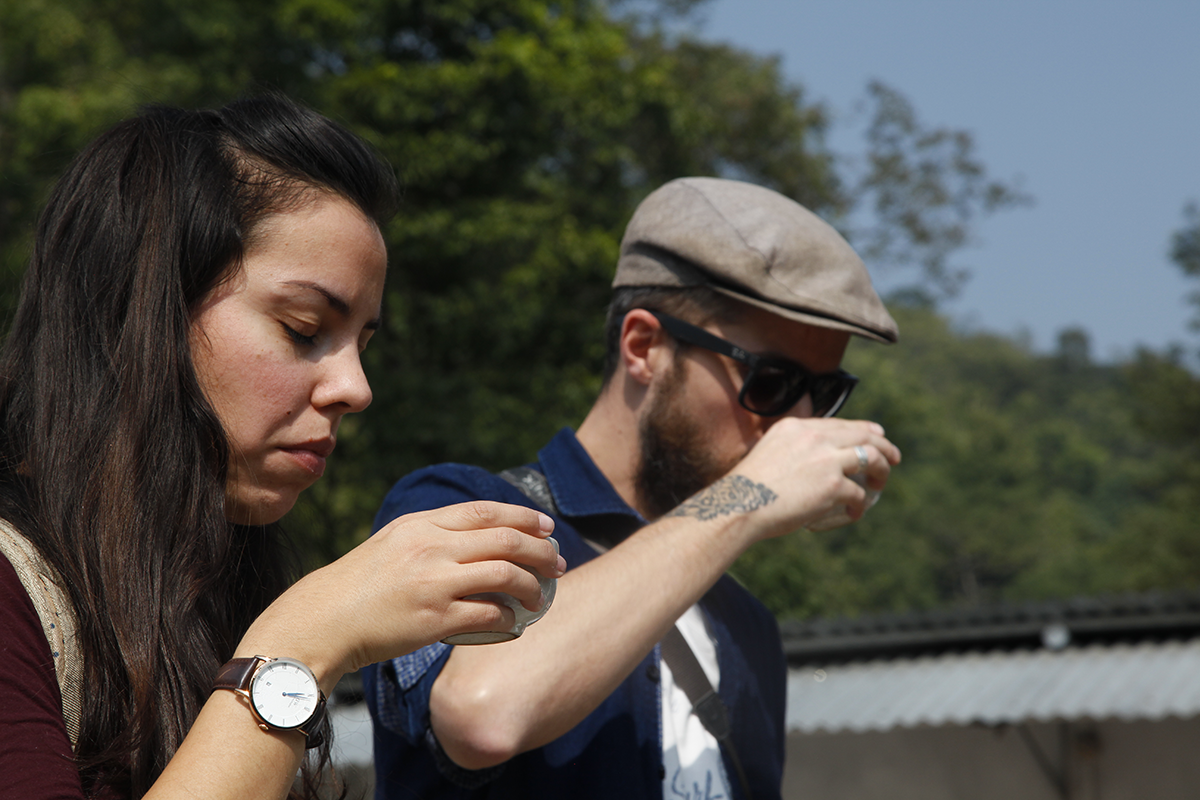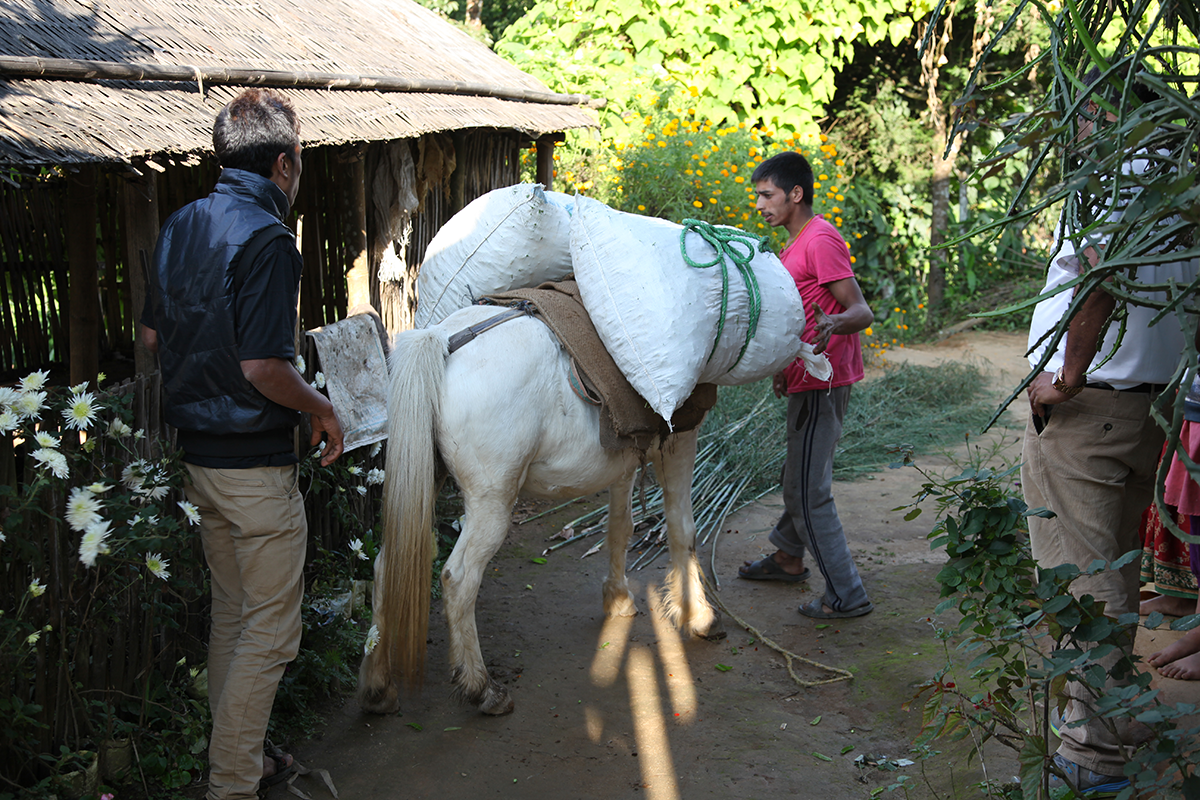The lotus flower plays a very important role in Vietnamese culture. So it’s not surprising that the country has a tradition of flavouring tea with the flower, resulting in a particularly sought-after beverage. Production takes place in June and July and requires patience, as the tea leaves are left in contact with the flower pollen for five days in a row.
A Hmong woman
The Golden Triangle is a fascinating region thanks to its varied geography, mountains covered in jungle, hidden valleys and, most of all, the many and varied ethnic groups who have made it their home. Each ethnic group has its own culture, language and customs. From one to another, the styles of houses change, their relationship with the land changes, the food changes. Here in Sung Do, in northern Vietnam, a woman sets out to pick tea leaves from hundred-year-old trees.
Harvesting in the treetops in the Golden Triangle!
In the region known as the Golden Triangle, you can find tea plants that are not quite like the others. Instead of being pruned at a low level to make it easier to pick the leaves, they are left to grow like trees. When harvest time comes, the pickers must climb up into the camellias, some of which are several hundred years old. The leaves from these trees are particularly sought-after to make Pu Erhs and dark teas.
Chinese machines launched the Nepalese revival
Nepal has been producing tea for nearly two centuries. Originally, the culture and organisation of its plantations were based on the model that existed in Darjeeling. But since then, things have evolved considerably. Just over 10 years ago, a number of enthusiastic tea producers wanted to see how things were being done elsewhere, and brought back from Taiwan and China various small-capacity machines that offer a different and much more artisanal solution for processing tea. Today, these machines are widely used in most of the country’s tea co-operatives. Thanks to their introduction and the dedication of the people who use them, we can now enjoy all sorts of teas from Nepal: white, semi-oxidised, shaped into balls… And from a tasting perspective, they are of a remarkable quality.
This revival of Nepalese tea that we’ve seen in the last decade stems from a break with the old British system.
Sharing
Sharing. What is better in life than to share? My job as a tea researcher is all about sharing, creating a link between the farmer who makes the tea and the enthusiasts who drink it. Passing on knowledge as it’s acquired. Sharing with one’s team, inviting them to visit the tea fields and farms, involving them in unique occasions, memorable time spent with villagers who are so kind and hospitable, so immensely generous.
Here, in Ilam valley in Nepal, I’m visiting the plantations of La Mandala, Pathivara, Tinjure, Shangri-la, Arya Tara and Panitar in the company of Carole, Fabienne, Oxana, Sofia, David, Léo and Mathias.
You can’t rely on a name, even a prestigious one
Tea can be complicated in that you cannot rely on a name as a gauge of quality, for the simple reason that tea grows in regions which often experience significant variations in weather. This results in variations in quality. One example is that during the monsoon, it rains non-stop for weeks on end, and the tea is obviously not good. A prestigious plantation that sometimes produces remarkable teas in the best seasons is not capable of doing the same during the rainy months. So a prestigious garden can also produce bad teas. This means it’s important for a tea researcher like myself to taste every tea before buying, and never rely on a name. And it’s also important for the customer to be well informed and guided by skilled sales advisers.
An inaccurate French name
The first Darjeelings of the year are generally described as the “first flush” in English, but in French, they’re known as the “spring harvest”. The latter is misleading as the harvest doesn’t fully coincide with the season. There are two reasons for this. Firstly, the low-altitude plantations that use irrigation techniques benefit from more clement weather and sometimes start producing small batches from the end of February. Secondly, the leaves on the same shoots are harvested every eight to ten days, and after three successive growths, the shoot’s thwarted growth leads it to send out a side shoot (this is known as the banjhi), which is of a lower quality and marks the end of the first harvests. This means that the so-called “spring harvests” actually come to an end around mid-April.
Tasting tea outdoors
A visit to a tea plantation always includes a tasting. This one took place in the dedicated tasting room, with light coming in from outside. Sometimes though, tastings can take place outdoors if the factory is too small, or doesn’t have the right equipment. With a bit of luck you can enjoy magnificent scenery while swirling the liquor around in your mouth. Here, in Pathivara (Nepal), a lovely stone table is used for tastings.
Admiration
Who do you admire the most, Sylvie Lavabre, a French journalist, asked me. I admire people who don’t give up, I admire adventurers and artists. I also admire tolerance and non-violence. I admire people who don’t compromise their values, who pursue a goal other than earning more money, or of gaining more power. I admire altruists, people who are happy when others are happy. I admire the highest achievers, the champions, the finest artisans, everyone who tries their hardest. I admire those who fail and pick themselves up and find the strength to try again. I admire people who devote a part or all of their life to bringing up others, raising children, educating them, teaching them. And I admire people who find happiness in what they have.
Safe passage
I’ve finished selecting my first-flush Darjeelings – 12 premium teas in total. From Puttabong to Thurbo, Namring Upper and Highlands, they represent the best of what these mountains have produced during the season. Now I want to tell you about the steps that follow the purchase of a tea of exceptional quality. First, the tea is packaged up on the plantation itself, then transported by truck to the nearest airport. From there, it travels to Paris, and on to the Palais des Thés warehouses. A sample of the batch is then sent to the lab for analysis. Once we’ve received confirmation of its compliance with the Safetea standards that are the pride of Palais des Thés, it is distributed to our various stores. The journey from plantation to cup takes several weeks and cannot be rushed. It’s a mark of quality and safety.

